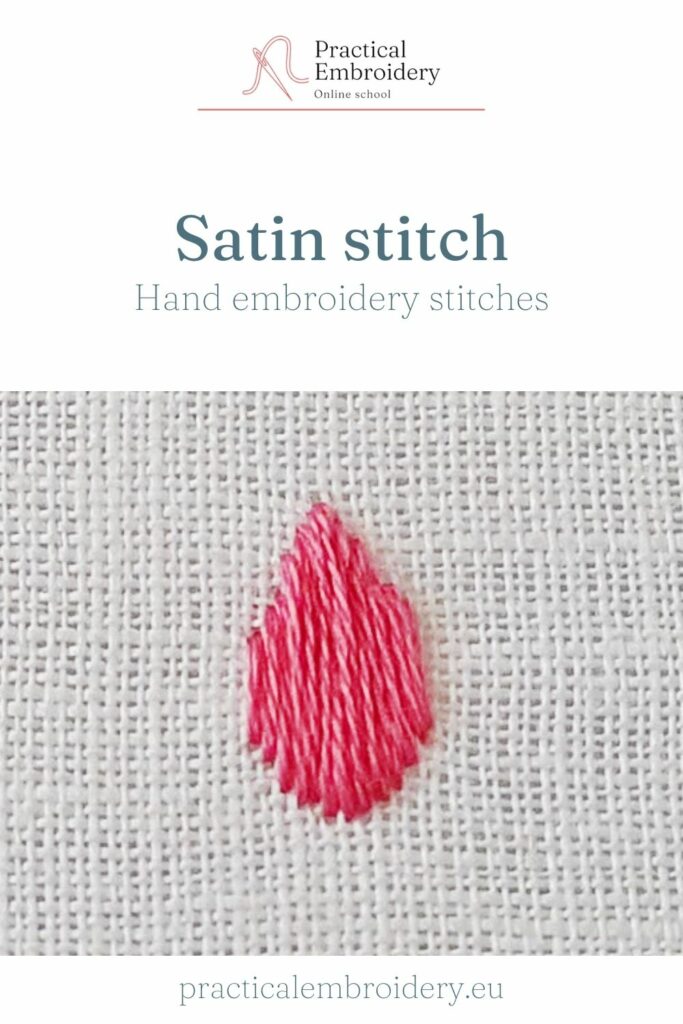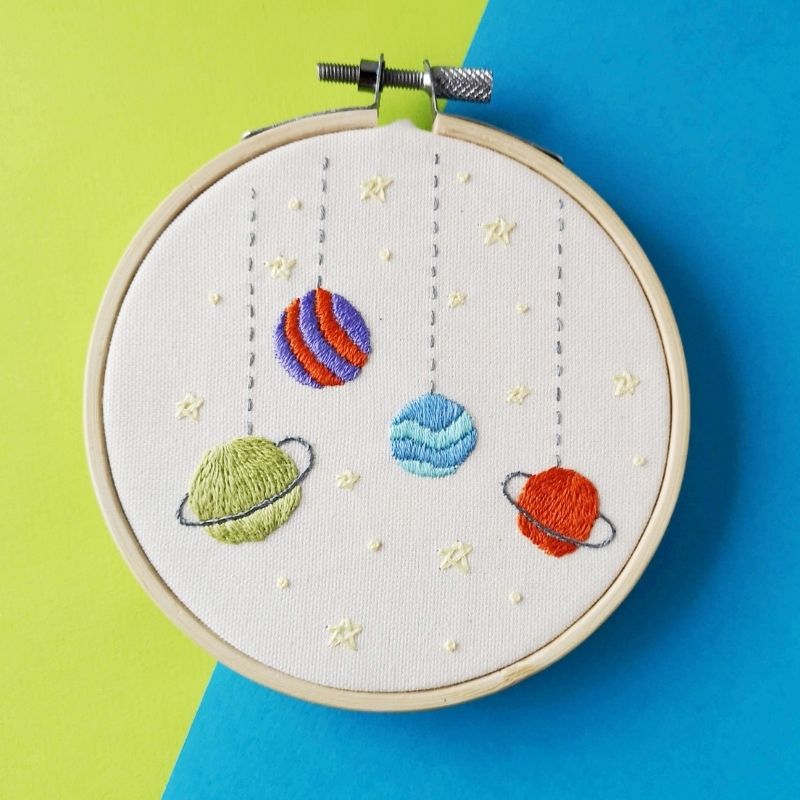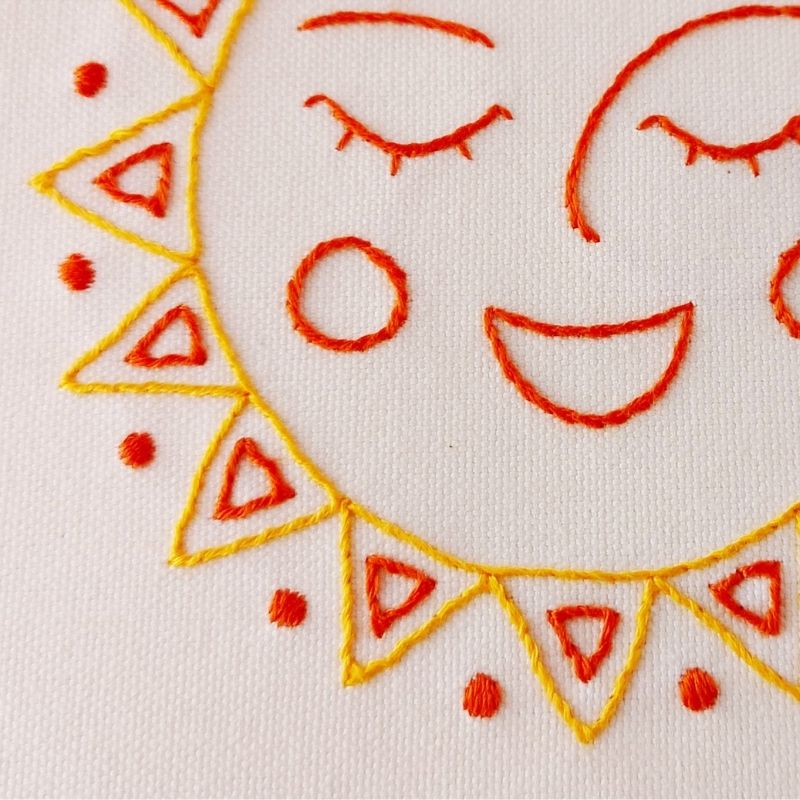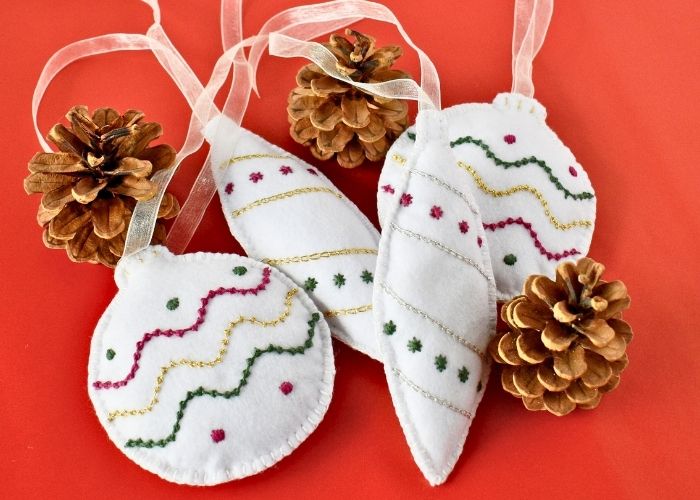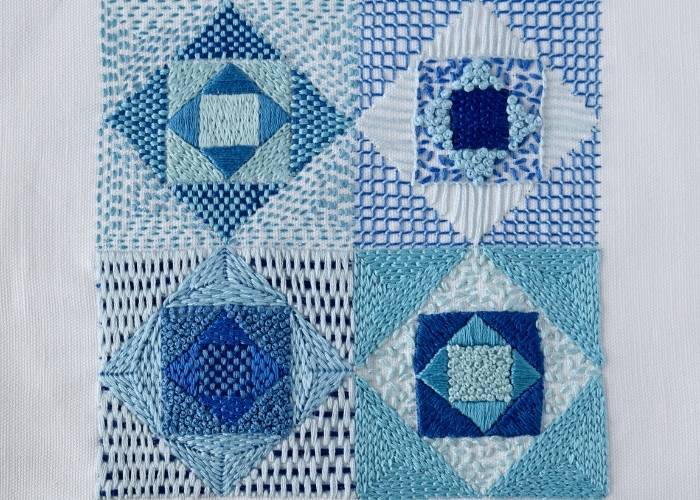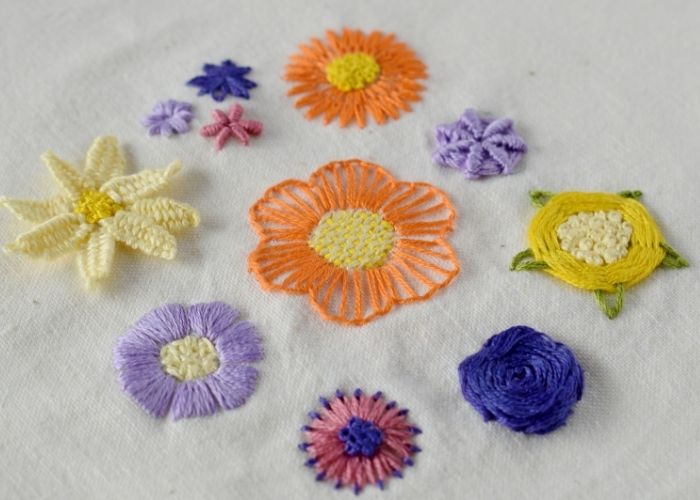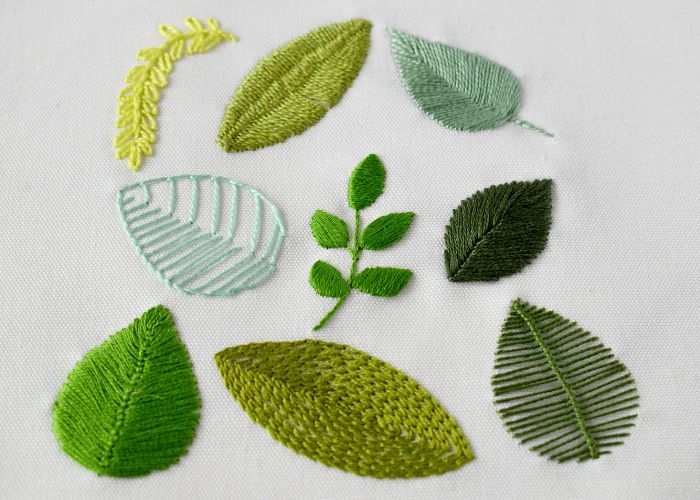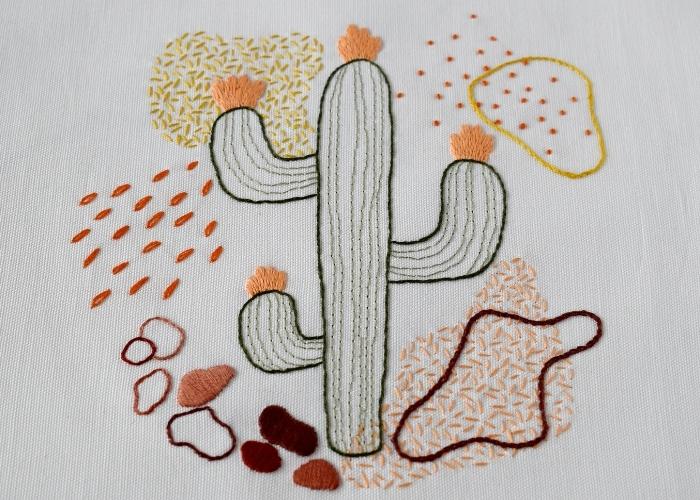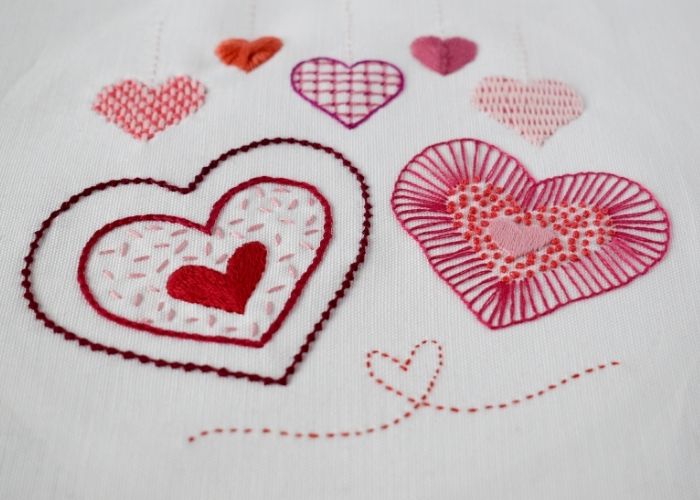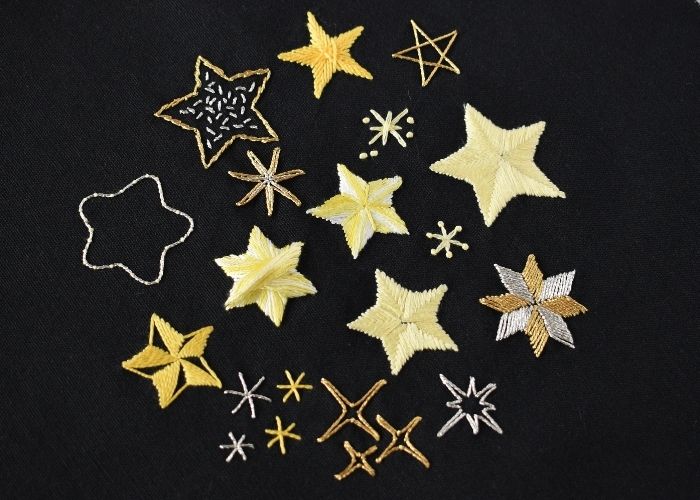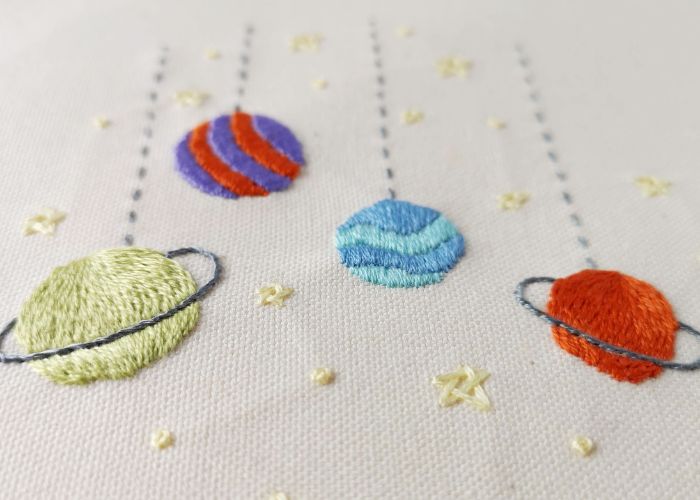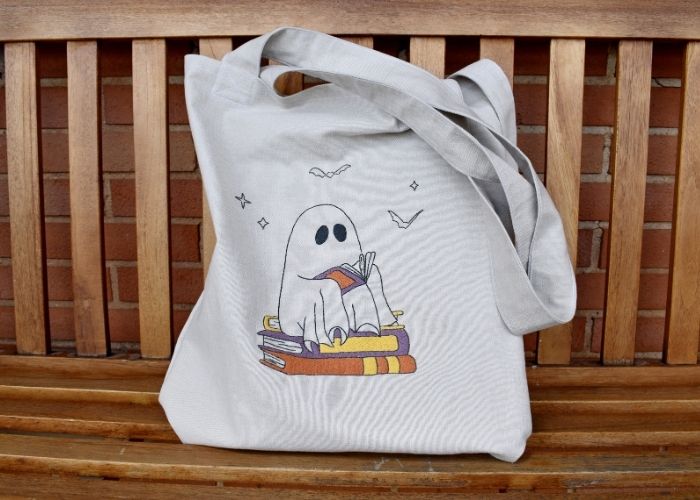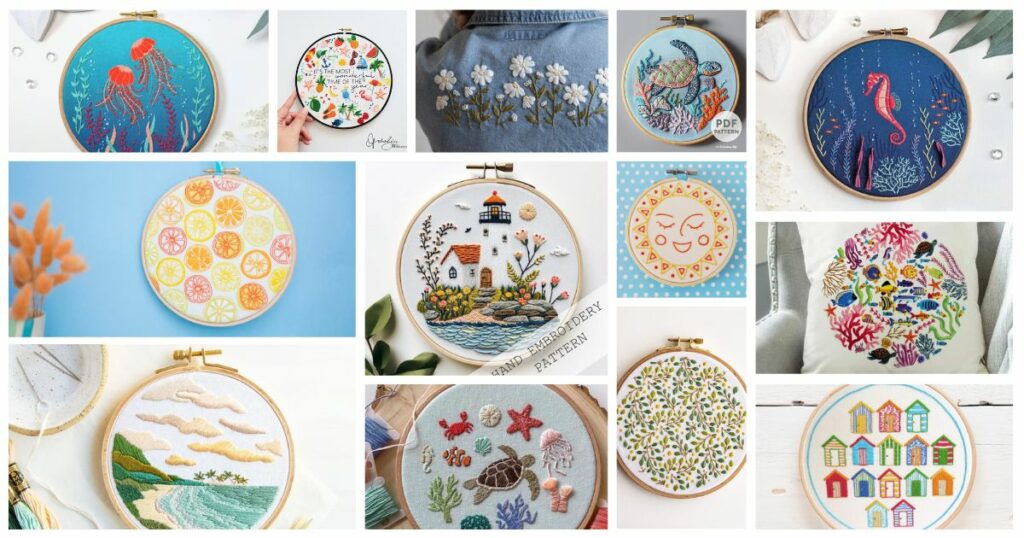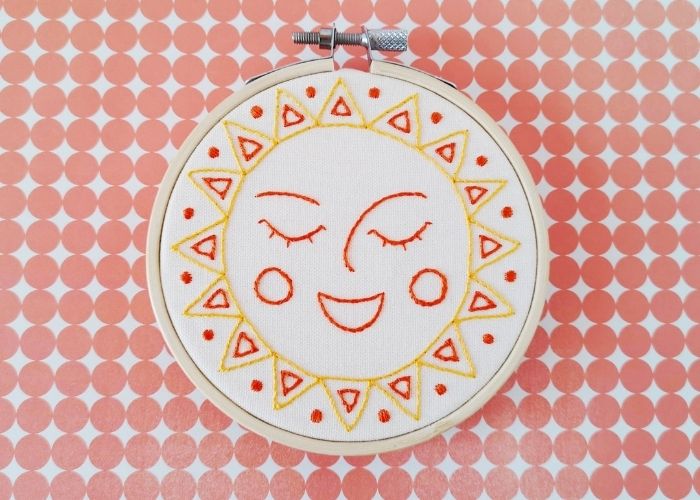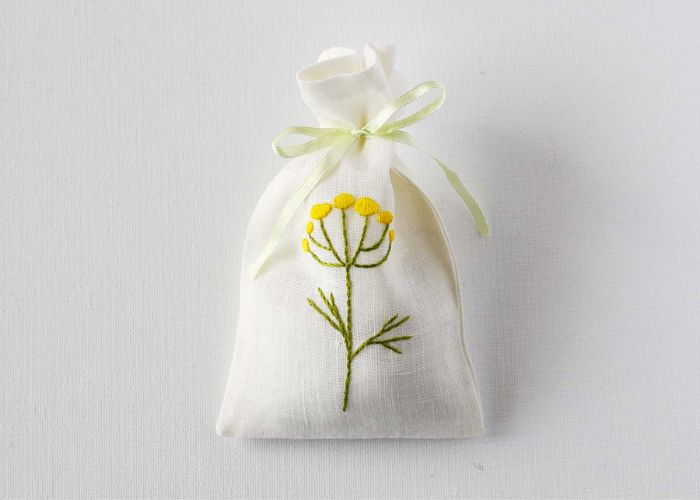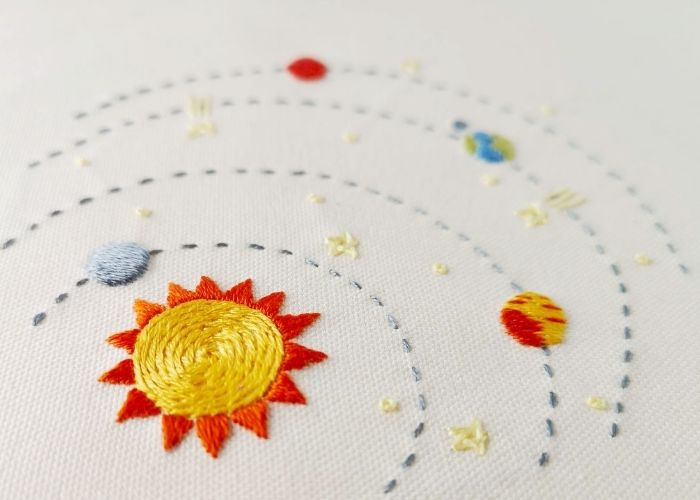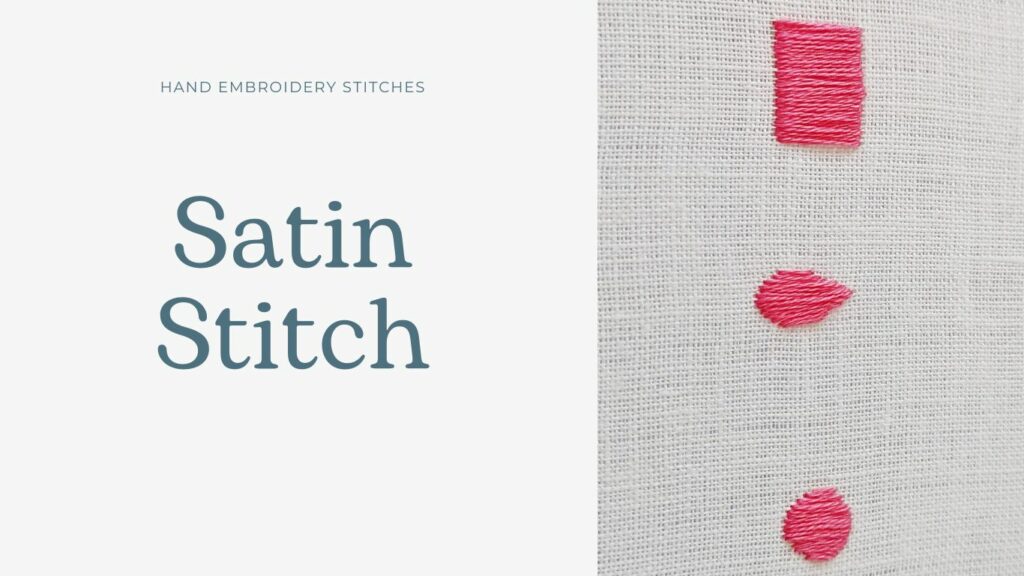
Satin Stitch
Satin stitch, also known as Damask stitch, is a hand embroidery technique, worked in close, parallel rows. It is widely used in many hand embroidery styles and has a long history. Besides that, it is a common needlework tradition worldwide.
The stitch is worked by carrying the thread across the shape to be filled and returning underneath the material next to the made stitch. The stitches may be performed in any direction, and they may vary in size, for example, when filling in a leaf shape.
I added this stitch to the list of the best embroidery stitches because you will need it for almost every embroidery pattern – so popular it is. It is considered a filler stitch, but you should be careful to use it only for small filling areas, as bigger satin stitches tend to loosen up.
Other names of the stitch
Satin stitch is often called a Damask stitch, Flat stitch, Long stitch or French Plumetis stitch.
Applications Of Satin Stitch In Hand Embroidery
This hand embroidery technique has a long history and has been used for centuries worldwide. This stitch is essential in whitework, crewel embroidery, canvas work, and of course, in modern surface embroidery. Satin Stitch is excellent for:
- Filling small areas
- Lettering
- Depicting flowers, leaves, or other botanical elements
- As a base for composite decorative stitches
Embroidery Tips
If you look to a more smooth look, keep in mind that:
- Thinner threads (or single strands) work better than more or thicker threads.
- Ground fabric with a high count and a firm and full weave will work better.
- Keep it small, don’t try to fill extensive areas with this stitch.
- When embroidering, start the satin stitch in the middle and move to the sides of the design.
- For more beautiful edges, outline the shape first (using a Split stitch or a Stem stitch).
More stitches from the Satin Stitch family
- Surface Satin Stitch
- Basket Filling Stitch
- Overcast Couching Stitch
Learn how to embroider Satin stitch
Watch a video tutorial below, and you will learn the Satin Stitch quickly.
What’s next?
If you’re in the mood to explore more hand embroidery stitches, check out the Stitches and Techniques page for the list of other fantastic stitches available on my blog. From timeless classics to modern twists, a whole world of stitches is waiting for you to explore and master. So, grab your hoop and needle, and let’s stitch our way to creative bliss!
Projects to practice Satin Stitch
